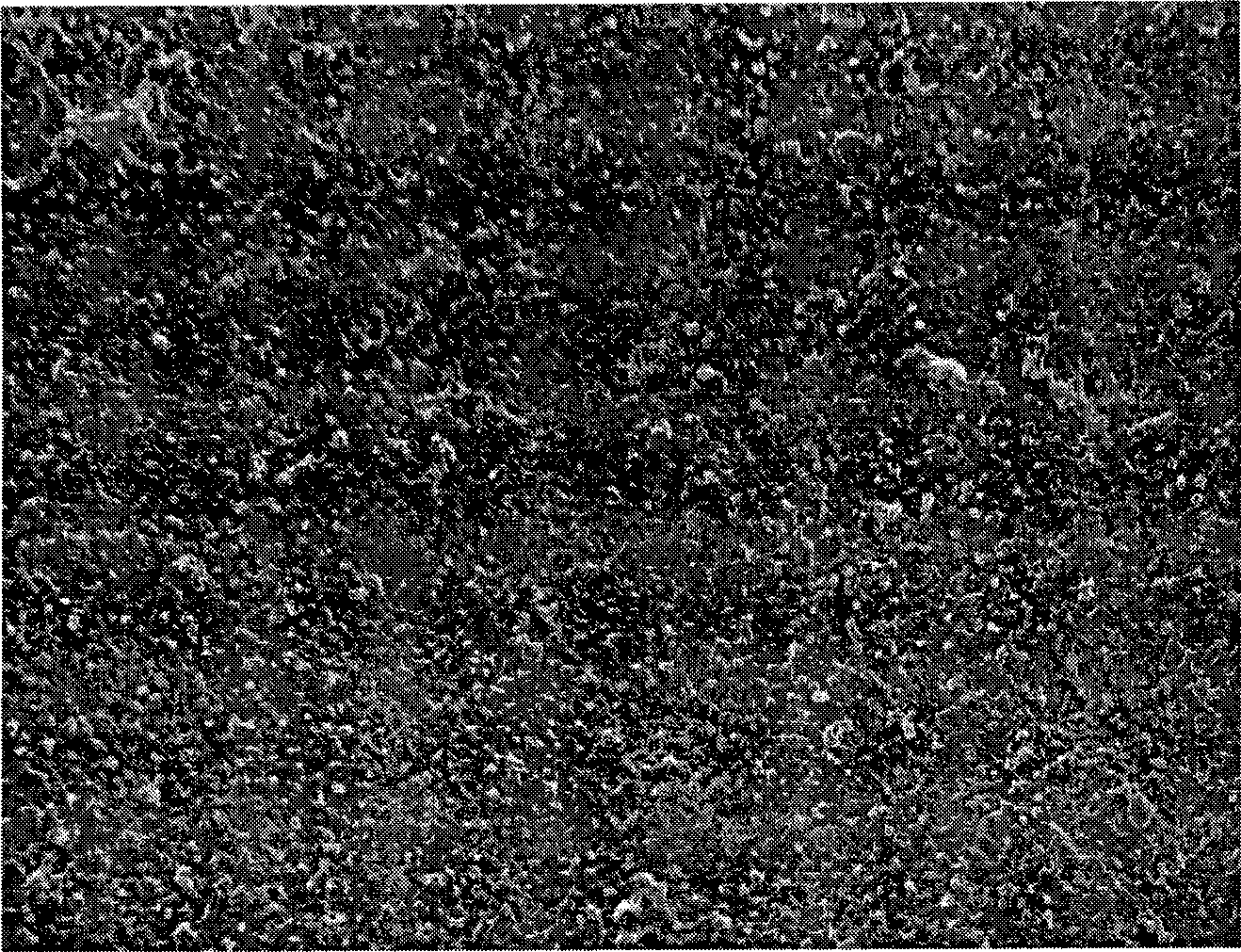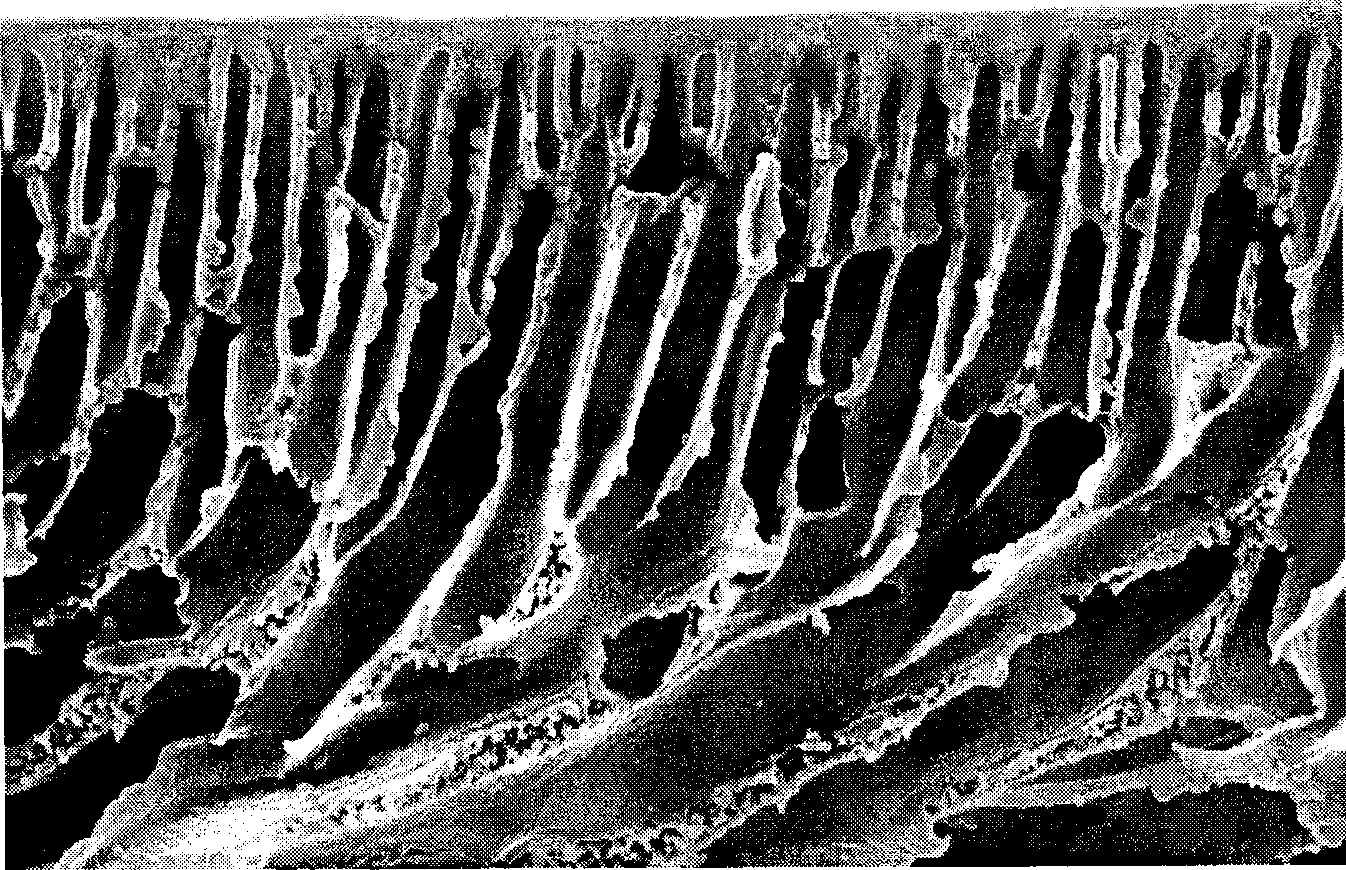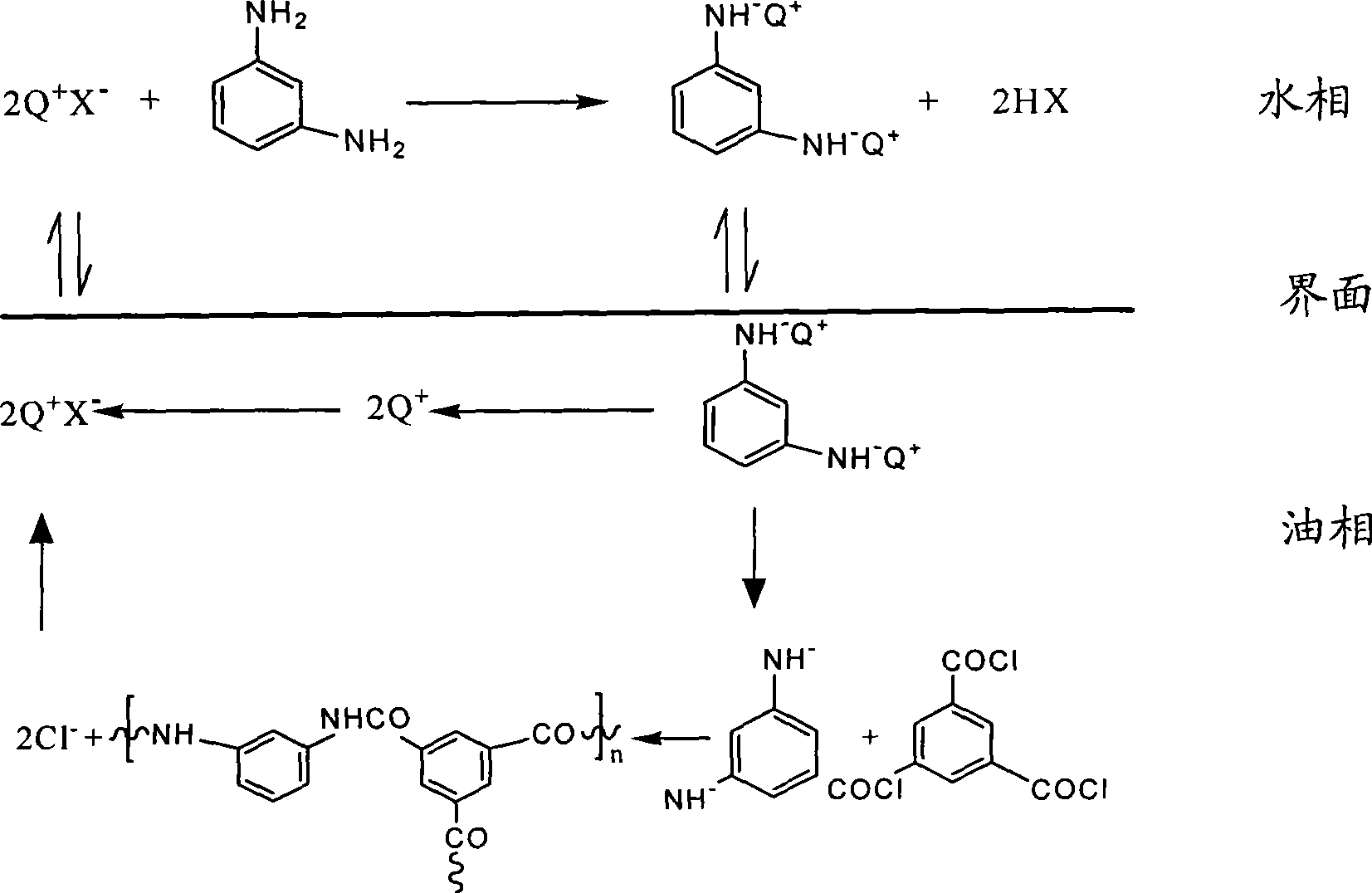Method for improving reverse osmosis compound film separating property
A technology of reverse osmosis composite membrane and separation performance, which is applied in the field of improving the separation performance of polyamide reverse osmosis composite membrane, can solve the problems of reducing the membrane rejection rate, and achieve the goals of simple and convenient operation, improved performance, large flux and interception rate Effect
- Summary
- Abstract
- Description
- Claims
- Application Information
AI Technical Summary
Problems solved by technology
Method used
Image
Examples
Embodiment 1-4
[0020] A polysulfone support membrane as previously described was used. The concentration of preparing m-phenylenediamine aqueous solution is 20g / L, and the n-hexane solution concentration of trimesoyl chloride is 3g / L, then in the m-phenylenediamine aqueous solution, add cetyl trimethyl ammonium chloride of different quality, Stir evenly, let it stand for a few minutes, then immerse one side of the wet polysulfone support membrane into the solution, soak for about ten minutes, then take it out and gently squeeze the surface of the support membrane dry with a glass rod, and mix with trimesoyl chloride The interfacial polymerization reaction was carried out by one-sided contact of n-hexane solution. After the composite membrane is dried in the air, it is treated in a vacuum oven at 60-80° C. for 10-20 minutes, and finally the composite membrane is taken out and rinsed with deionized water for about half an hour. The prepared composite membrane was stored in water, and the flux...
Embodiment 5-8
[0026] Same as method in embodiment 1-4, just change the concentration of m-phenylenediamine aqueous solution into 12g / L, the n-hexane concentration of trimesoyl chloride is still 3g / L. These four examples can reflect that the improvement of membrane performance by phase transfer catalyst is more obvious when the concentration of reactive monomer is lower.
[0027]
[0028] * The amount of cetyltrimethylammonium chloride added is the relative mass to the mass of phenylenediamine in the aqueous solution.
Embodiment 9-12
[0030] Same as method in embodiment 1-4, just change the concentration of the m-phenylenediamine aqueous solution into 12g / L, then change the phase transfer catalyst cetyltrimethylammonium chloride into tetrabutylammonium chloride therein . These four examples are to investigate the effect of adding tetrabutylammonium chloride on the membrane performance.
[0031]
[0032] * The amount of tetrabutylammonium chloride added is the relative mass to the mass of m-phenylenediamine in the aqueous solution.
PUM
 Login to View More
Login to View More Abstract
Description
Claims
Application Information
 Login to View More
Login to View More - R&D
- Intellectual Property
- Life Sciences
- Materials
- Tech Scout
- Unparalleled Data Quality
- Higher Quality Content
- 60% Fewer Hallucinations
Browse by: Latest US Patents, China's latest patents, Technical Efficacy Thesaurus, Application Domain, Technology Topic, Popular Technical Reports.
© 2025 PatSnap. All rights reserved.Legal|Privacy policy|Modern Slavery Act Transparency Statement|Sitemap|About US| Contact US: help@patsnap.com



